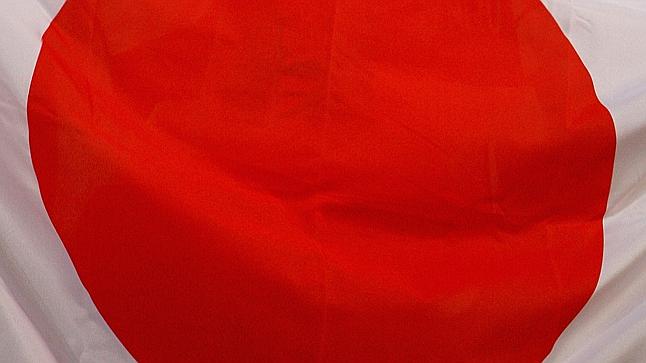Has Japan Entered a Third Lost Decade?

Please note that we are not authorised to provide any investment advice. The content on this page is for information purposes only.
Japan’s recession is not paving way for sustained growth. It is prolonging new debt and liquidity and thus deteriorating fiscal discipline.
In the last quarter, Japan’s economy fell into recession. In the West, it was characterized as “unexpected.”
The realities are precisely the reverse. With its third ’lost decade,’ Japan has entered an era of massive monetary expansion that it not adequately supported by the fundamentals of its economy.
Japan’s recession is not paving way for sustained growth. It is prolonging new debt and liquidity and thus deteriorating fiscal discipline.
In the last quarter, Japan’s economy fell into recession. In the West, it was characterized as “unexpected.”
The realities are precisely the reverse. With its third ’lost decade,’ Japan has entered an era of massive monetary expansion that it not adequately supported by the fundamentals of its economy.
Any premature exit from more fiscal stimulus and monetary easing will backfire, as the last two quarters have now demonstrated. So Tokyo will seek to resolve its gigantic debt challenge by taking more debt.
That’s not the solution but part of the problem.
Table of Contents
From contraction to recession
In the three months through September, Japan’s GDP contracted by an annualized 1.6 percent, as a result of the sales tax hike in April.
Consumption accounts for some 60 percent of the Japanese economy, but remains fragile. When household assets rose to a record in late June, Prime Minister Shinzo Abe’s Liberal Democratic Party (LDP) saw it as a sign of success. In reality, the 3 percent tax hike and the Bank of Japan’s (BOJ) historical easing have boosted living costs faster than incomes.
Companies are reluctant to invest, even as major firms enjoy record profits. A year ago, there was much talk about “Japan is back.” But even though the yen has slid 13 percent against dollar, exports added only 0.1 percent to GDP. Instead, the GDP is driven by unsustainable government spending.
What next? In public, Abe and LDP will take a back step, seek electoral support for new rounds of fiscal stimuli and for still more liquidity into the economy.
Politically, the recession is likely to trigger a snap election in the coming weeks to boost LDP’s public support, despite the decline in Abe’s approval ratings. The opposition remains fragmented.
Pointing to the “surprising” contraction, Abe seeks to defer the proposed second hike of the sales tax in October 2015, perhaps until 2017.
Instead, LDP legislators hope to garner some 4.6 trillion yen (US$ 40 billion) for a still another economic stimulus.
Risky gamble
After two lost decades, Japan began a risky monetary gamble when Abe and LDP returned to power in 2012-13. As Haruhiko Kuroda succeeded Masaaki Shirakawa as the BOJ governor, he pledged to do “whatever it takes” to achieve the 2 percent inflation target.
The BOJ pledged to begin open-ended asset buying hoping to inject US$1.4 trillion into the Japanese economy in just two years, while doubling the monetary base to 270 trillion yen (US$2.3 trillion) by the end of 2014.
The monetary gamble went hand in hand with Abe’s reform agenda of renewed fiscal stimulus, aggressive monetary easing and proposed structural reforms. Inspiringly, he also pushed for greater role of women in the labor markets. However, immigration reforms linger.
In addition to a massive liquidity risk, Tokyo took another risk in timing, as I argued at the time. Timing the key in Japan’s massive gamble to revive the economy
The initial goal was to implement the fiscal stimulus in 2013, while fiscal consolidation would follow in 2014. Obviously, the markets would love Japan in 2013, but unease would increase in 2014.
As Abe went head with the sales tax hike in spring, the recovery was too fragile for consolidation, which was further undermined by LDP’s politics, rearmament, and friction with China. Will Japanese Politics Undermine The Reform Agenda?
Afterwards, the market consensus expected 2.25 percent expansion in the third quarter. And yet, Japan slid into recession.
Behind the façade, soaring risks
Today, Japan’s sovereign debt is hovering close to 250 percent of its GDP. But instead of caution, Japanese institutions are joining in the gamble.
In late October, the US$1.2 trillion Government Pension Investment Fund (GPIF) said it would take more aggressive bets by reducing funds in domestic bonds while pumping up its investments in stocks.
While other global pension funds struggle to minimize holdings in risky assets, GPIF is boosting such investments. Since it controls the retirement incomes of some 67 million participants, individual Japanese are now chips in the monetary gamble.
In Tokyo, GPIF’s announcement was presented as part of Abe’s efforts to make Japanese stocks more attractive and thus accelerate the nation’s recovery. In practice, it is attracting speculative capital to Tokyo.
Moreover, the BOJ announced it would boost its asset-buying program by a third and purchase not just more government bonds, but also stocks and real-estate funds. That goes far beyond what the U.S. Fed and other central banks have bought in their stimulus programs. It also blurs the very notion of risk.
As the BOJ is underwriting the politicians’ huge borrowing, it is eroding the credibility of public finance in Japan and the perceived independence of the central bank itself. But, of course, it led to party in the markets. Days before the third-quarter report, stocks soared seven-year highs, buoyed by expectations that Abe will defer the planned sales tax hike.
What happens in Tokyo will not stay in Tokyo. By spring – months before the latest rounds of debt-taking – Japan’s share of Asia’s debt stock amounted to 70 percent.
As Tokyo’s fiscal discipline will further deteriorate, it will eventually pave way for further instability in Asia, even globally.
Japan’s Third Lost Decade Begins is republished with permission from Dr. Dan Steinbock




